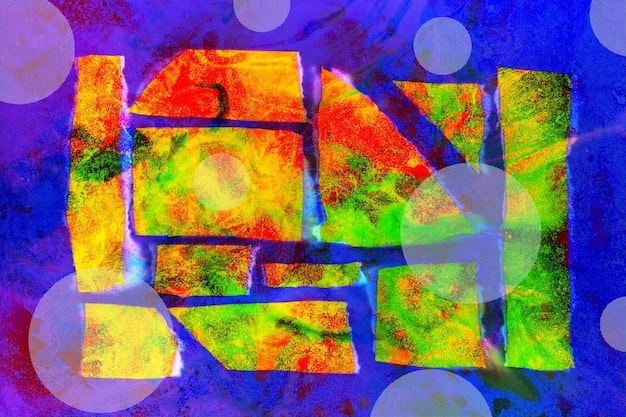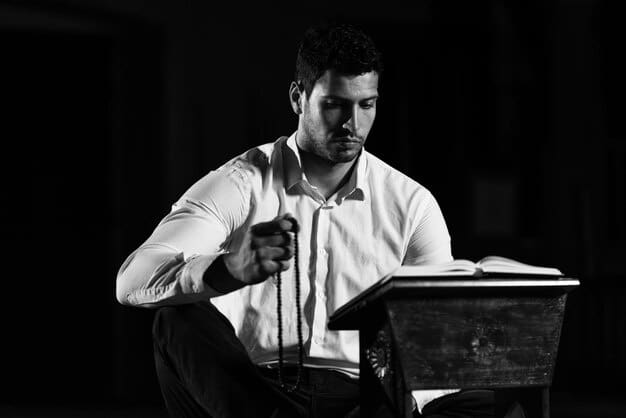How Post-Structuralism Impacts American Literary Criticism in 2025

How Has Post-Structuralism Shaped Contemporary American Literary Criticism in 2025? Post-structuralism continues to deconstruct established norms, questioning traditional interpretations and emphasizing the role of language and power in shaping literary meaning within the evolving landscape of American Literary Criticism.
The landscape of literary criticism is ever-evolving, and in 2025, the influence of post-structuralism remains a critical lens through which we interpret American literature. How Has Post-Structuralism Shaped Contemporary American Literary Criticism in 2025? This question delves into the core tenets of this theoretical approach and uncovers its enduring impact.
Join us as we explore how post-structuralism continues to challenge conventional wisdom and redefine the boundaries of literary analysis in the 21st century.
Understanding Post-Structuralism and Its Core Principles
Post-structuralism, emerging in the mid-20th century, built upon andcritiqued structuralism, questioning its emphasis on fixed structures and universal meanings. It emphasizes that meaning is unstable and contingent, dependent on context and the reader’s interpretation.
Key Concepts in Post-Structuralism
Several core concepts define the post-structuralist perspective:
- Deconstruction: Identifying and dismantling inherent contradictions and hierarchies within a text.
- Différance: Emphasizing that meaning is derived from difference and is never fully present.
- The Death of the Author: Challenging the notion that the author’s intention is the primary source of meaning.
- The Instability of Language: Recognizing that language is not a neutral medium but actively shapes and influences meaning.
Post-structuralism highlights that reading is an active process of construction rather than passive reception. The reader, therefore, plays a critical role in creating meaning.

How How Has Post-Structuralism Shaped Contemporary American Literary Criticism in 2025?
In 2025, post-structuralism’s influence on American literary criticism can be seen in several ways. The theory has encouraged critics to move beyond traditional interpretations and to consider the multiple meanings and perspectives within a text.
Many critics now prioritize examining the ways in which texts reflect and reinforce power structures, cultural biases, and social inequalities.
The Focus on Language and Meaning
Post-structuralism has significantly influenced how literary scholars analyze language and its role in shaping meaning, with critics examining not what a text says, but how it says it, exploring the nuances of language and its potential for constructing diverse interpretations.
- Analyzing the rhetorical strategies used by authors.
- Examining the ways in which language can be used to create or challenge social norms.
- Exploring the multiple interpretations that a text can generate.
In this way, language is no longer seen merely as a tool for conveying information, but as an active force in the production of meaning.
Deconstruction in Contemporary Literary Analysis
Deconstruction remains a powerful tool in contemporary American literary criticism, allowing critics to identify and dismantle the underlying assumptions and hierarchies within a text. Deconstruction identifies underlying contradictions and tensions in a text, revealing multiple, often conflicting, interpretations.
Critics use deconstruction to expose the limitations of traditional interpretations and to open up new avenues for understanding literature.
- Examining the ways in which texts undermine their own claims.
- Identifying the binary oppositions that structure a text (e.g., good/evil, male/female).
- Challenging the notion of a single, unified meaning.
By deconstructing conventional readings, literary critics can uncover hidden meanings and expose the complex interplay of power and ideology within texts.
The Impact on Canonical Texts
Post-structuralism has led to a re-evaluation of canonical texts in American literature. Scholars are now questioning the traditional interpretations and assumptions associated with these works, challenging the very idea of a fixed canon.
By applying post-structuralist principles, critics expose how these texts may perpetuate social inequalities or reinforce dominant ideologies.
Challenging Traditional Interpretations through Post-Structuralism
Critics are actively challenging canonical interpretations and exploring alternative readings that align with the theory.
- Examining the representation of marginalized groups in canonical texts.
- Challenging the assumption that canonical texts are inherently superior to other works.
- Exploring the historical and cultural contexts in which these texts were produced and received.

Criticisms and Limitations of Post-Structuralism
While post-structuralism has had a profound impact on literary criticism, it is not without its critics. Some scholars argue that the theory is too abstract and theoretical, making it difficult to apply to concrete texts.
Others criticize its tendency toward relativism, arguing that it undermines the possibility of objective knowledge and meaning.
Despite these criticisms, post-structuralism remains a valuable tool for understanding the complexities of literature and its relationship to culture and society.
The Future of How Has Post-Structuralism Shaped Contemporary American Literary Criticism in 2025?
Looking ahead, post-structuralism will likely continue to shape American literary criticism by providing a valuable framework for analyzing literature and its relationship to culture and society.
As literary critics increasingly engage with topics such as identity, globalization, and technology, post-structuralism will undoubtedly offer new insights and perspectives.
Emerging Trends Inspired By Post-Structuralism
Here are some additional areas to watch.
- Interdisciplinary approaches that integrate literary criticism with other fields, such as sociology, history, and cultural studies.
- The use of digital tools and technologies to analyze and interpret literature.
- The development of new theoretical perspectives that build upon and extend post-structuralist principles.
| Key Point | Brief Description |
|---|---|
| 💡 Deconstruction | Uncovers contradictions, revealing multiple interpretations. |
| ✍️ Language Instability | Language shapes, not just transmits, meaning. |
| 📚 Re-evaluation | Canonical texts are questioned regarding social inequalities. |
| 🔄 Future Trends | Interdisciplinary approaches and digital tools enhance analysis. |
Frequently Asked Questions
Post-structuralism emphasizes the instability of meaning in texts, focusing on how language and power dynamics influence interpretation, moving beyond fixed structures.
Deconstruction identifies contradictions within a text to expose multiple interpretations. It challenges a single, unified meaning, revealing underlying assumptions and hierarchies.
The “death of the author” diminishes the author’s intended meaning, prioritizing the reader’s interpretation and highlighting the author’s cultural bias within the text.
Critics argue post-structuralism is too abstract and undermines objective knowledge, leading to excessive relativism and difficulty in applying to real-world contexts.
In 2025, post-structuralism in literary criticism will continue to influence the interdisciplinary approach by focusing on issues of identity in a worldwide context.
Conclusion
In conclusion, How Has Post-Structuralism Shaped Contemporary American Literary Criticism in 2025? As we’ve explored, post-structuralism continues to provide invaluable tools for analyzing literature, encouraging critics to question traditional assumptions and consider multiple perspectives. Its emphasis on language, power, and interpretation continues to reshape how we understand and engage with texts.





